I wrote the other day about energy efficient houses and about CLT panel walls that allow heat to be kept inside, used in building passive houses. But energy efficiency is not just about insulating walls. Heat loss can also occur at other points. By far the most sensitive areas are glazed areas. Mobile or fixed glass windows and glass doors are all sensitive points. The problem can be solved by using windows that keep heat out in winter and keep it in in summer. Such windows are known as double glazed windows and can have frames made of various materials. As they can also be wooden windows, obviously they are the wooden thermopane, as we are used to calling them.
The term "thermopane" is actually the Romanian version of a registered trademark. "Thermopane" is the name under which the first window with a pane consisting of two layers of glass mounted in a single frame was registered in 1941 by the LOF Glass Company, Ohio, USA. The system had been invented in 1930, also in the USA, by C.D. Haven, but the need for the glass to be of uniform thickness and completely straight made it impossible to manufacture at that time, resulting in very high production costs.
Over time this system has proven to be very energy efficient. We now find it very hard to believe that a new house can be built without double glazing, and owners of old houses are increasingly choosing to replace old wooden windows with double glazed ones.
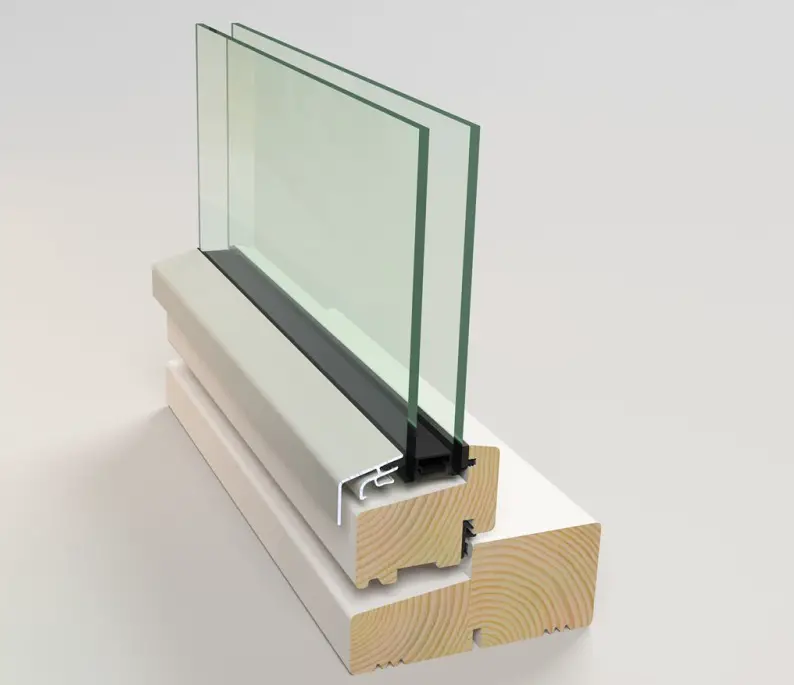
How to determine the efficiency of double glazed wooden windows
Very important in the case of double glazed windows is the heat transfer coefficient which, as with thermal insulation, is measured in W/m²K. The lower the coefficient, the more thermally efficient the window. For example, in passive houses it should be less than 0.85.
The thermopane window is made up of the frame and the glass sandwich. The calculation of the heat transfer coefficient is done for both components, as heat can pass through both. In addition, heat can also escape from the house through the area where the window is mounted in the wall, so the heat transfer coefficient for the mounted window is also important. For passive houses all three coefficients must be below 0.85.
How to build wooden window frames
Window frames are made of timber, and different species of wood can be used: fir, spruce, pine, oak. Unlike classic joinery, where the frame is made of a single piece of wood, double glazed windows are made of several layers of wood glued together. The layers are laid along the grain, not perpendicular to each other.
The most effective frames are those in which the fibre of the layers is laid in a mirror. Heat passes through the frame in the form of a wave. When it encounters the wood layer facing the wrong way, the amplitude of the wave decreases, reducing the amount of heat transferred. The thicker the frame, the more energy efficient it will be. It goes without saying that the thickness of the frame cannot be exaggerated in order to achieve the best possible efficiency. Everything is calculated to achieve the best result, so the thickness is also chosen to be efficient, but also strong, light, easy to use and aesthetic.
Often the efficiency of the frame is improved by making profiles or holes inside one of the layers of wood. The air in these profiles acts as an insulator. Combinations of wood and composite materials are also used to increase performance.
A very efficient type of frame, usually used in passive houses, is aluminium clad on the outside. There is free space between the wood and the metal and the air in this space is a very good insulator. The advantage is that metal is very weatherproof and there is no danger of rotting, as can happen with wood if the construction solution is not well chosen.
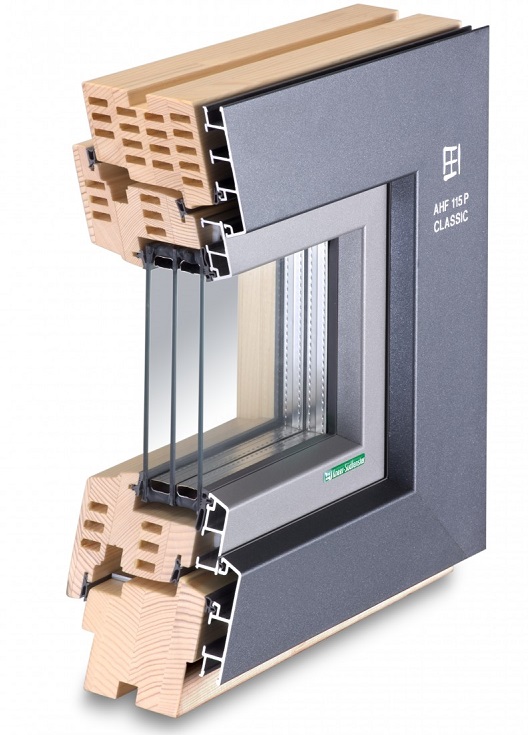
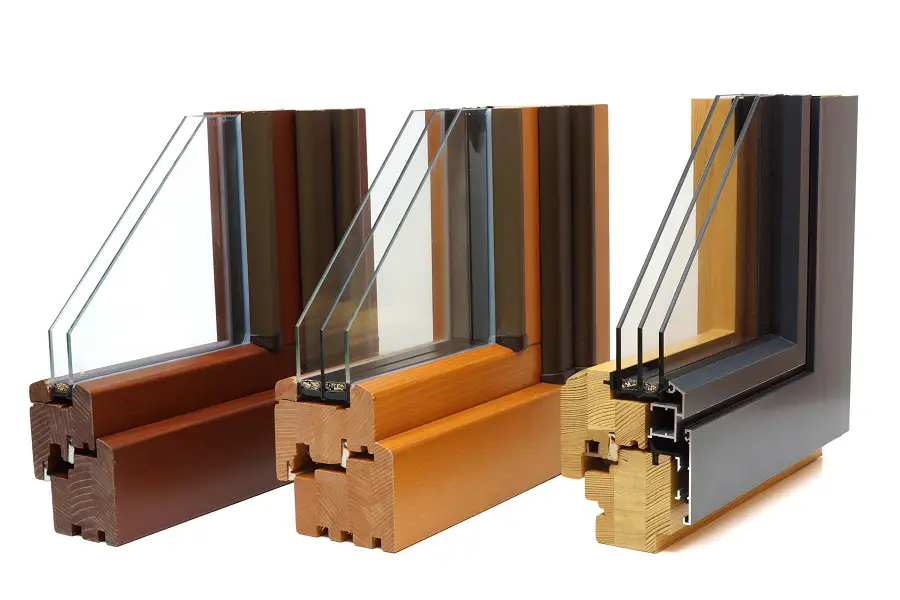
Requirements for energy-efficient glazing
Window glazing is in fact a panel made of 2 or 3 layers of glass. Between these layers is dry air or inert gases that reduce heat transfer, and the pane is sealed. The gases used are argon or krypton. Krypton is more efficient than argon, but also more expensive. It is used when the model requires a smaller distance between the glass layers. Sometimes a mixture of the two gases is used to increase efficiency without a huge increase in price.
The glass used must be of very good quality, strong and of uniform thickness. It may contain UV absorbers, be lightly coloured and have very thin protective films applied to the surface to reflect the sun's rays or increase mechanical strength.
Strips are placed between the layers of glass to keep the distance between them constant even with variations in atmospheric pressure. The strips prevent the build-up of moisture - they are anti-condensation - or the leakage of inert gas from inside.
Passive houses use 3-paned windows. The 3-layer glass panel is 40-50 mm thick and very energy efficient. The glass covering sheets can accumulate heat and release it when the temperature drops inside.
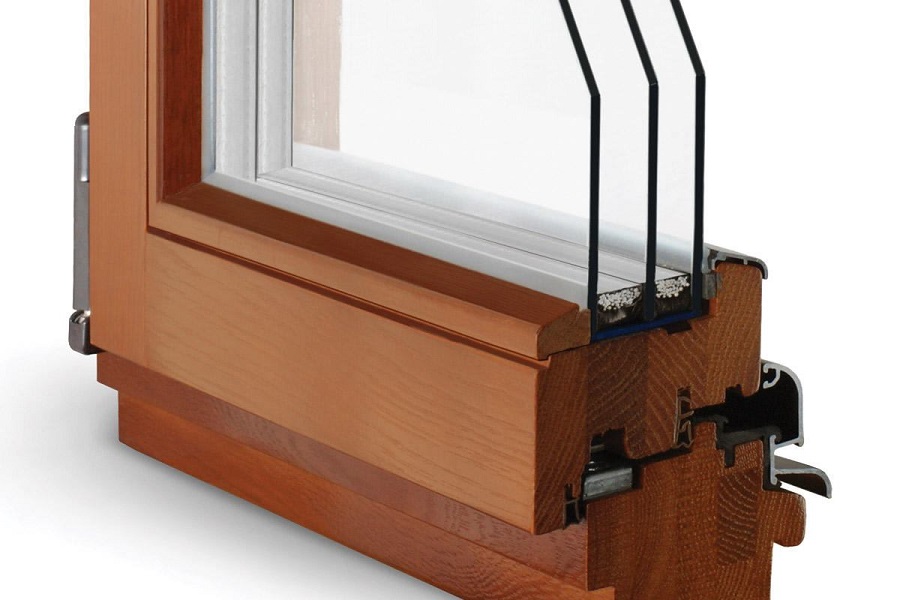
How to install for maximum thermal efficiency
Window fitting is very important and influences the thermal and sound efficiency of windows. The fitting is done directly into the gap left by the builder in the wall of the house or into a wooden frame which is then fixed into the window space. The windows are fixed with polyurethane foam that completely fills the gap between the wall and the window frame.
The walls in which the windows are fitted are much thicker than the window frame, and these are load-bearing walls. There are three ways of fitting windows in the gap left by the builder for this purpose:
- on the outside, the window being flush with the facade,
- on the inside, with the window flush with the inside face of the wall, or
- halfway between the above positions. Studies have shown that this is the most effective way of mounting or as close to it as possible.
When fitted, small channels form inside the polyurethane foam through which heat can be lost. In passive houses, windows are fixed to the wall using narrow sheets that are glued both inside and outside. These sheets are glued to the window outline (which will be covered by plaster) and continue the insulation of the wall, preventing the formation of energy bridges. This prevents heat escaping through channels in the foam. The foils are in the form of scotch tape rolls that are glued to both the frame and the wall.
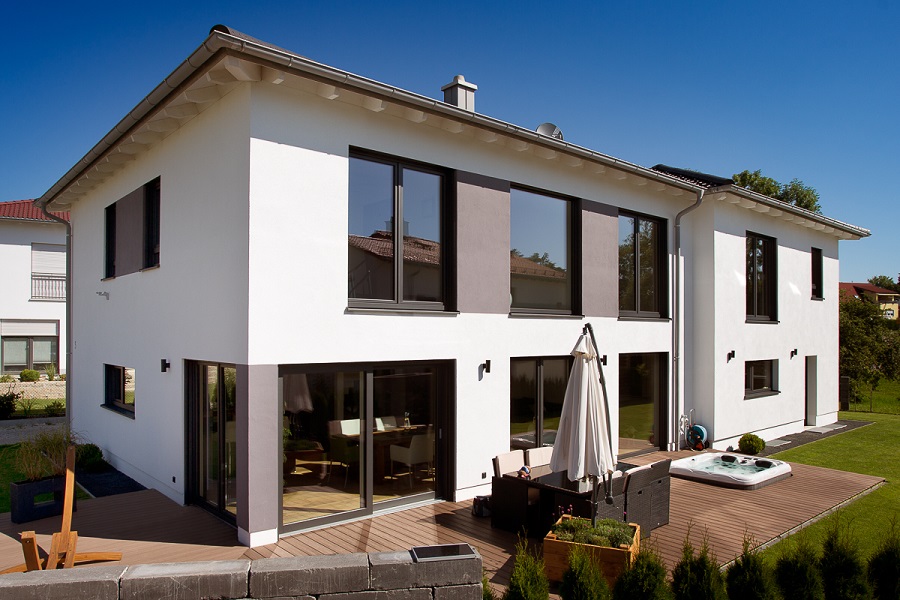
Hardware, fittings, finishing of wooden windows
The quality and efficiency of the window is also ensured by the hardware, the fittings used and the finish chosen. The hardware must ensure a perfect seal and the hinges must be able to support the weight of the window. A weak hinge will gradually give way, the window will no longer fit perfectly and heat loss can occur.
Gaskets must be of good quality and withstand both low winter and high summer temperatures. A poor quality material will become stiffer, even brittle, in winter and the seal will no longer be tight. In summer, a poor quality material can become too soft, even sticky, losing its qualities.
Window finishing is made with outdoor resistant materials. Paints are the most resistant over time, while glossy varnishes are the least resistant. A perfectly clear varnish does not protect the window against UV radiation. That's why exterior varnishes are lightly tinted with pigments. If the wood is stained, the stains used must be outdoor resistant.
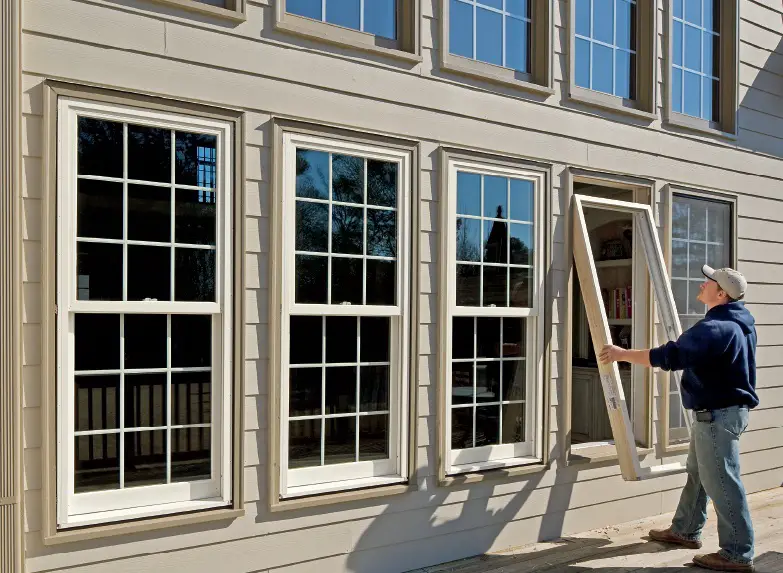
The energy efficiency of the house can be improved by simply replacing windows
In the case of passive house construction, the performance of windows and walls is calculated according to the climatic conditions in the area. Although they are built according to strict rules and clear standards, each passive house built is unique in its own way. The whole house is designed down to the smallest detail and the choice of windows is made at the design stage.
For ready-built houses, replacing ordinary windows with double glazed windows can increase the energy efficiency of the house, thus reducing energy costs. You can find plenty of calculations on energy savings, some of them even made for 20 years since the windows were changed.
And in this case the window fitting is as important as the window itself. If you decide to take such a step, consider the possibilities very carefully and call in a specialist fitting company. Don't try to cut corners on quality, don't cut corners at this stage. Savings will appear afterwards, but only if the choice of window and its replacement is done correctly.
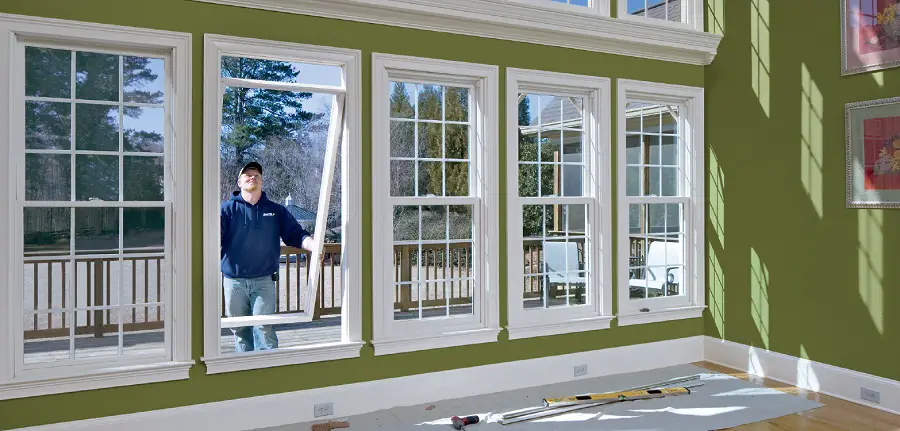






















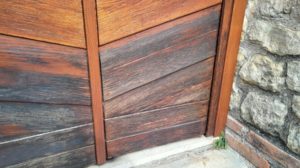


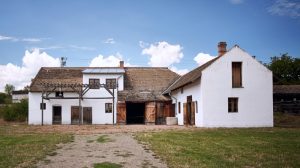
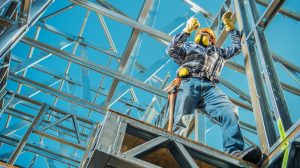
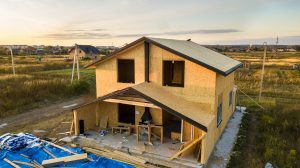
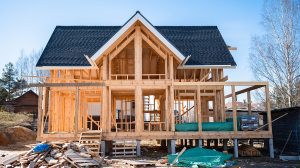

Hi , I would need a phone number of who makes wooden windows.
Thank you!
Hello!
There are several manufacturers of wooden windows. Holze is one of them. Find contact details on holze.ro
All the best!